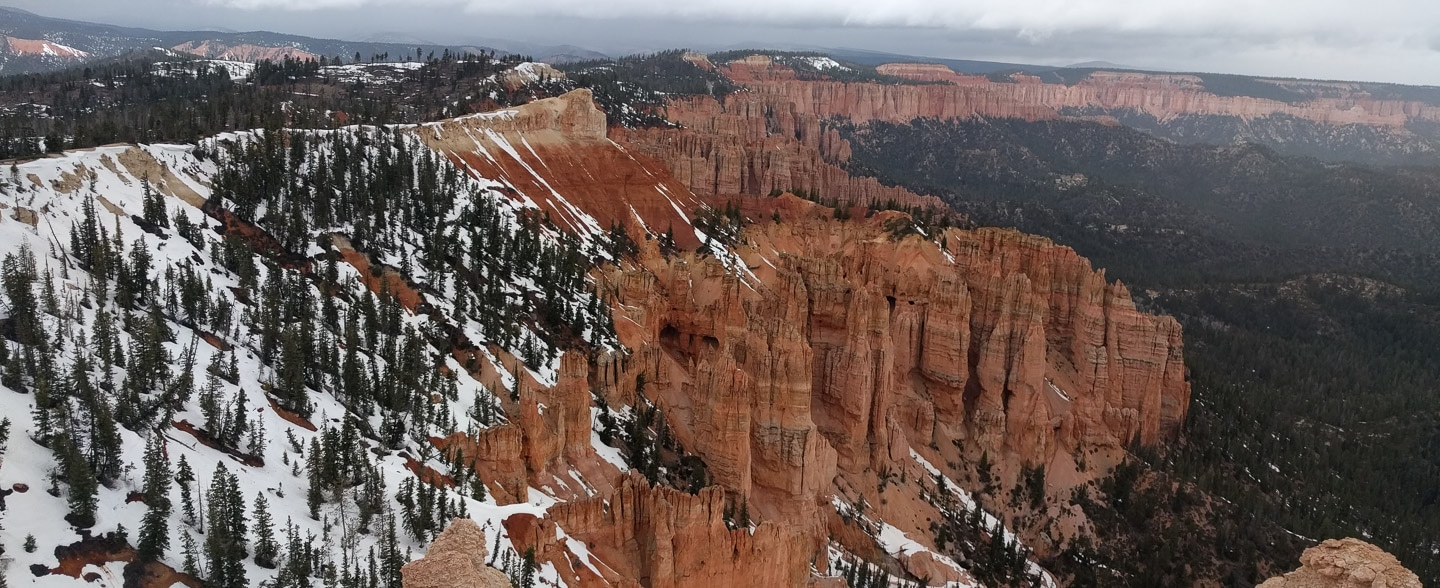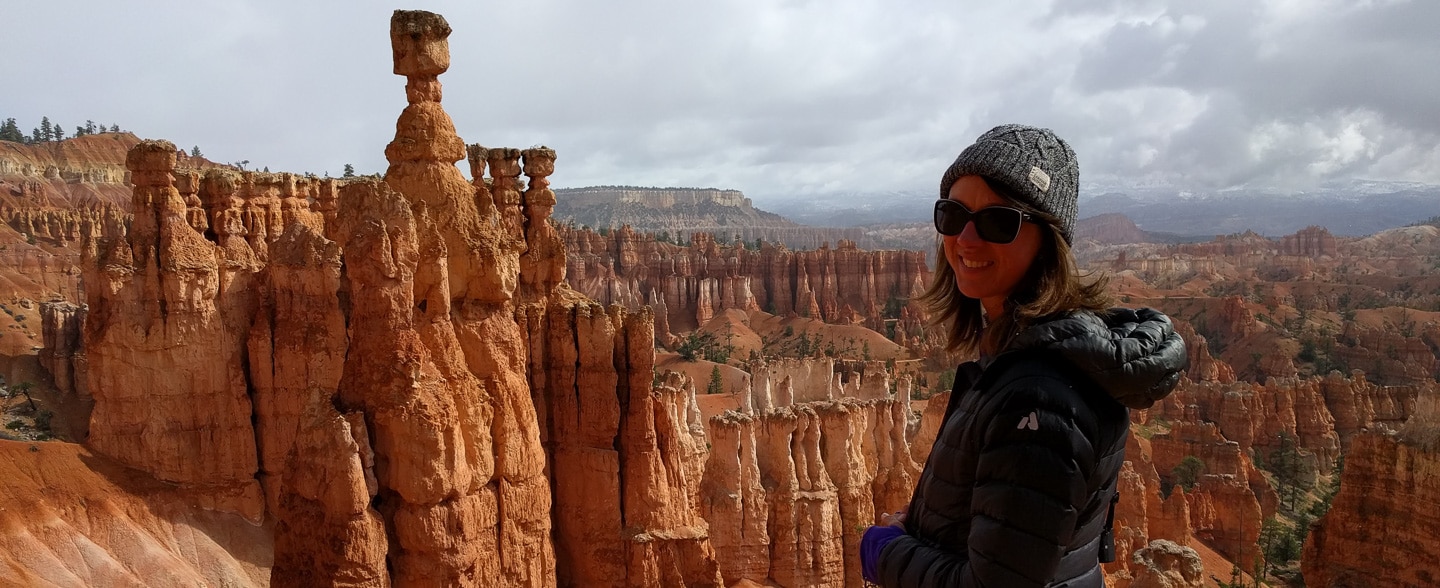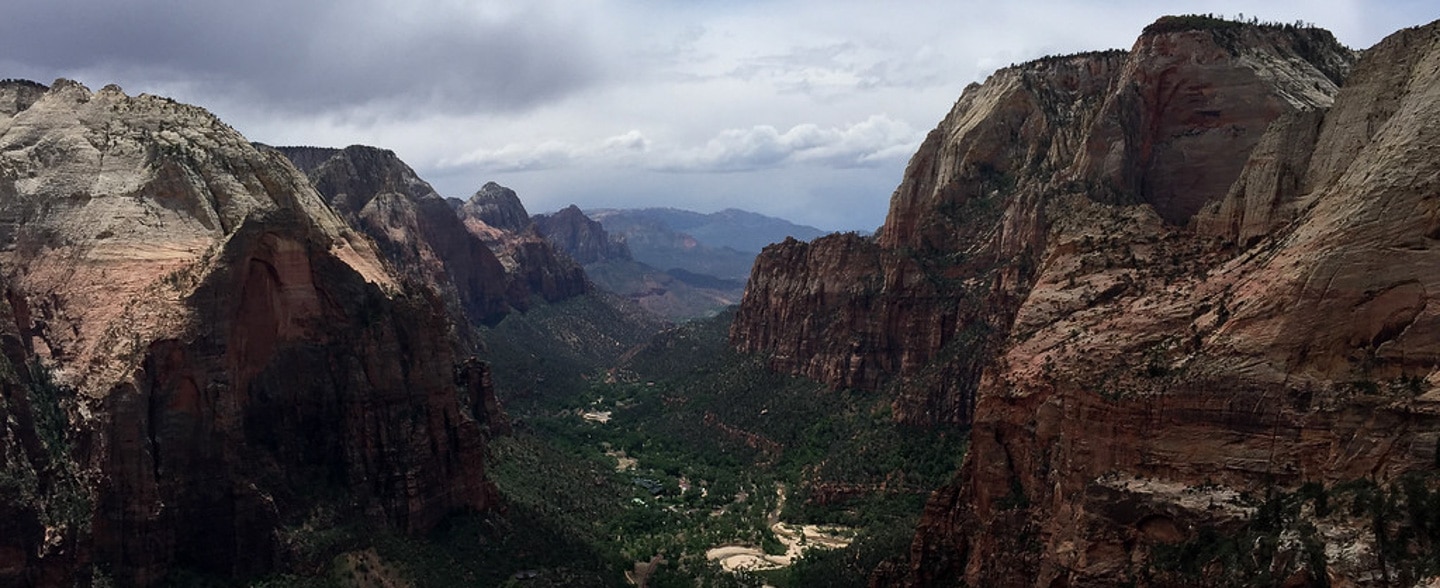For steep sections—or the ones particularly close to the precipice—the National Park Service has strung thick chains to help you climb, hand over hand, up the gritty red sandstone.
I’m here with Alice Walton, DuVine’s West Coast Product Director, preparing for upcoming biking and hiking tours of Zion and Bryce Canyon. We’re checking in on some of our favorite hotels and restaurants and revisiting the hiking trails. In true DuVine style, this trip reveals the parks by way of beautiful new bike paths and two-wheel tours through secluded canyons—plus hiking and even canyoneering.
We begin in St. George, a town of 80,000 in the southwest corner of Utah, where the historic downtown is hemmed in by the Colorado Plateau and the Beaver Dam Mountains. Just outside of town, past newly built golf courses and baseball fields, Snow Canyon winds a gentle five miles up through ochre sandstone. Offset by black lava rock and sage, road bikers blitz down the perfect pavement past hikers’ campgrounds. Mountain bikes are a frequent sight on the back of Jeeps.
I am tempted by the proliferation of great biking, leaning in to ask any local who shows interest about their favorite cycling trails and routes. We leave a day too soon for the Hurricane Mountain Bike Festival, and I’m already eager to bring DuVine guests back.

Hiking + Biking Bryce Canyon National Park
A two-hour drive northeast of St. George, Bryce Canyon National Park drops away to the east of a high ridge. Below the rim trail, gnarled rock pillars called hoodoos stand at attention. This part of the park is called The Amphitheater—Bryce Canyon is home to plenty of aptly named formations, including Sinking Ship, Thor’s Hammer, and Queen Victoria, which is remarkably similar in shape to her profile in a particular photo. Since it’s March and we’re 8,000 feet above sea level, we wake to a sprinkling of snow and a little hail. But the dusting only makes for a more striking four-mile hike through Queen’s Garden (which isn’t a garden at all, but a cluster of hoodoos around the aforementioned Queen Victoria rock).

The park’s iron-infused limestone formations are constantly eroding, changing the face of the landscape at a pace discernible over a single human lifetime. It’s actually breathtaking: just ask the families, dyed-in-the-wool campers, and folks in town for the Bryce rodeo four nights a week. There’s a kind of Wild West aesthetic, a rugged mountain terrain you could slip into if you felt like finding the wilderness.
Hiking + Biking Zion National Park
Circling south, we hit Utah’s crown jewel: Zion National Park. Compared to Bryce, Zion is deep and narrow. The main canyon is accessible only by bike or shuttle, so it stays pretty quiet and makes cycling an incredibly intimate way to experience its setting. At dawn and dusk, the light departs the river valley first, leaving the red and white peaks ethereally lit up.

Zion was first protected in 1909, seven years before the National Park Service was founded. Today, as the NPS faces a multi-billion-dollar maintenance backlog and proposed cuts to its budget, the parks themselves have never been more popular. In 2016, Zion had its greatest attendance ever, exceeding four million people, while Bryce Canyon exceeded two million for the first time.
These are popular places for good reason. Everyone experiences them differently; each visitor is seeking something personal from these parks. In Zion and Bryce Canyon, there are a few spots we felt DuViners would be drawn to, and we’re especially excited to share them. The harrowing hike to Angel’s Landing in Zion, for example, is thrilling for its knife-like ridges and rewarding views of the canyon’s entirety sprawled beneath you. And aside from the natural beauty, this is what makes the parks wonderful: they protect the most spectacular places in the country, and they’re meant to be seen and experienced in person—and by bike.




